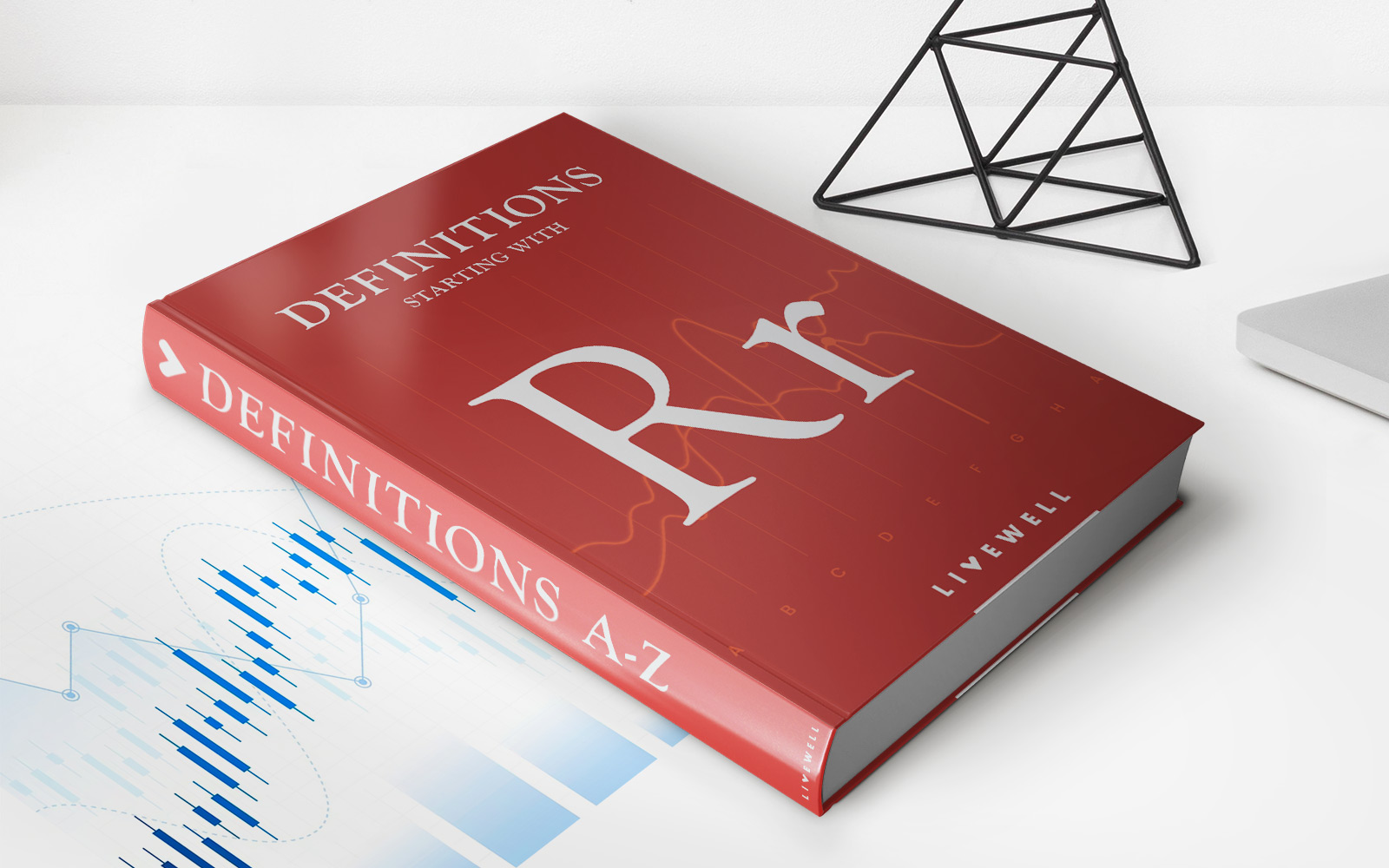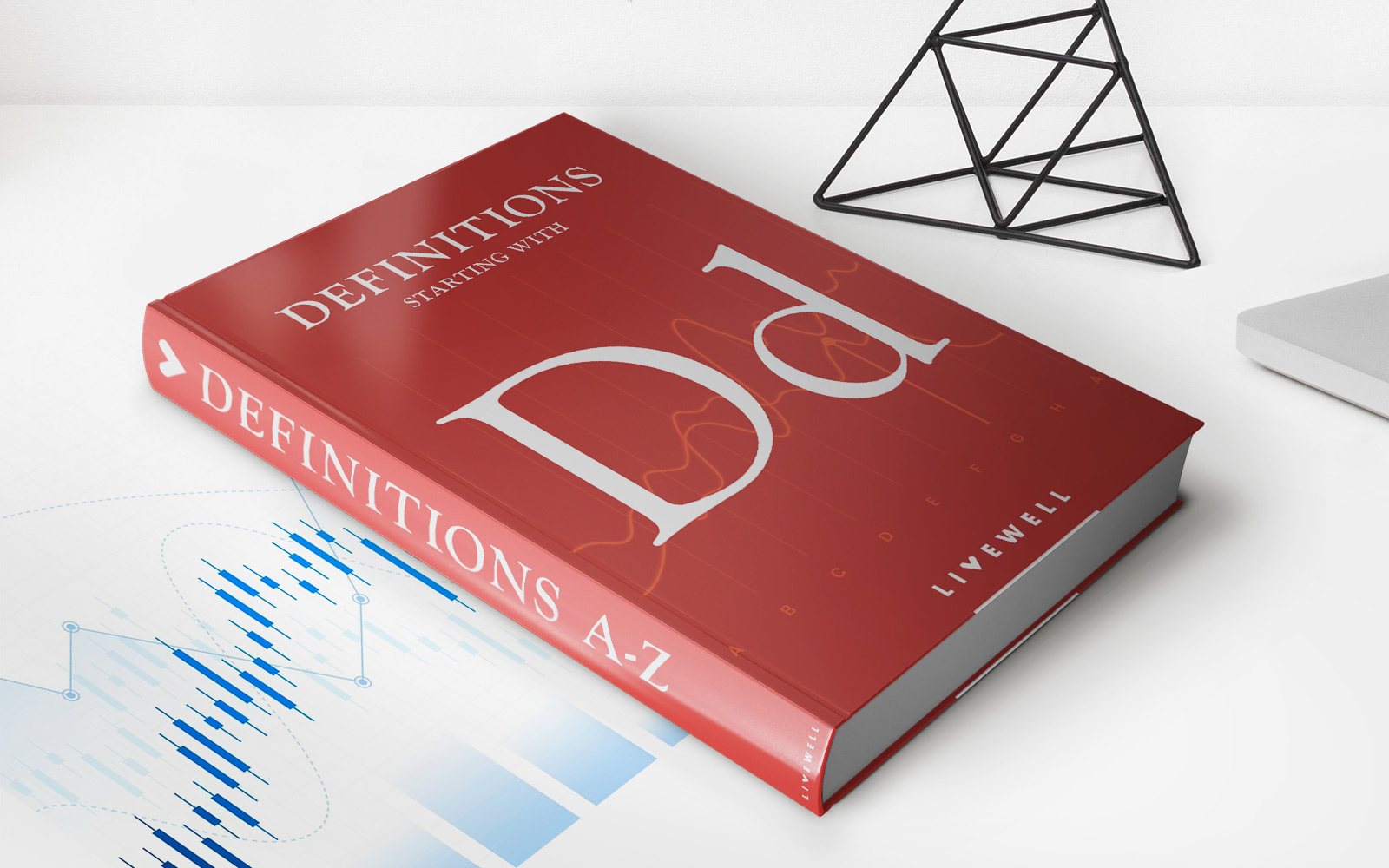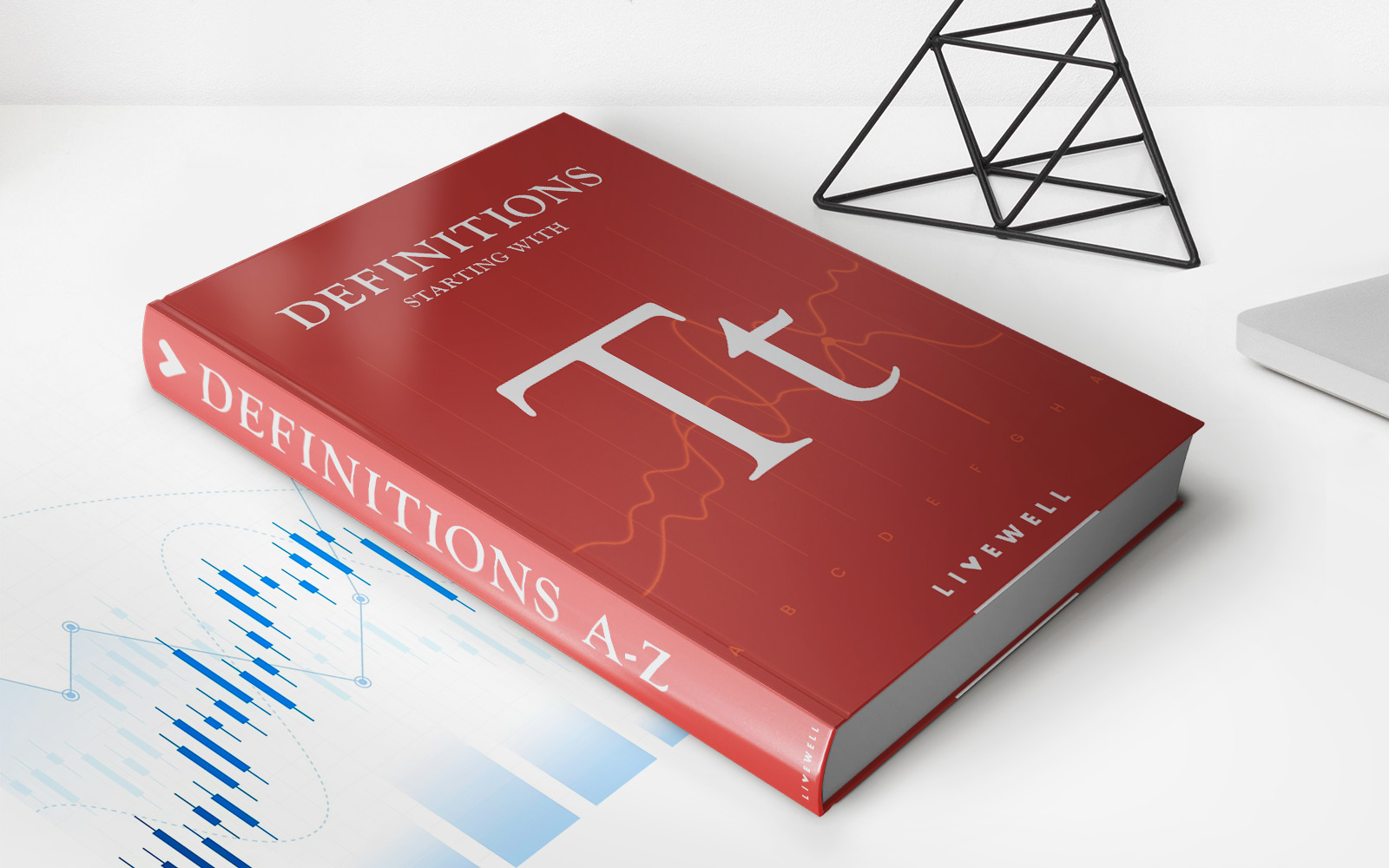Home>Finance>How The Capital Structure Relates To The Cost Of Capital.


Finance
How The Capital Structure Relates To The Cost Of Capital.
Published: December 25, 2023
Learn how the capital structure affects the cost of capital in finance. Understand the relationship between these key concepts for better financial decision-making.
(Many of the links in this article redirect to a specific reviewed product. Your purchase of these products through affiliate links helps to generate commission for LiveWell, at no extra cost. Learn more)
Table of Contents
Introduction
Welcome to this comprehensive guide on how the capital structure of a company relates to its cost of capital. Understanding this relationship is vital for finance professionals, entrepreneurs, and investors alike, as it has a significant impact on a company’s financial health and overall profitability.
The capital structure of a company refers to the mix of debt and equity used to finance its operations and investments. Companies raise capital through various means, such as issuing bonds, taking bank loans, or selling shares of stock. The decision to utilize debt or equity in the capital structure is crucial, as it can affect the risk profile, cost of capital, and ultimately, the valuation of the company.
In this guide, we will delve into the key components of capital structure, including debt and equity, and explore how they contribute to the overall cost of capital. We will discuss the relationship between capital structure and the cost of capital, as well as the factors that influence the cost of capital. Finally, we will highlight the importance of maintaining an optimal capital structure.
Whether you are a finance professional looking to optimize your company’s capital structure, an entrepreneur seeking funding options, or an investor evaluating investment opportunities, understanding the relationship between capital structure and the cost of capital is vital to making informed financial decisions. So let’s dive deeper into the world of capital structure and discover how it impacts a company’s financial performance.
Understanding Capital Structure
Capital structure refers to the way a company finances its operations and investments by combining different sources of funding. It represents the mix of debt and equity that a company employs to support its activities.
The primary goal of determining the capital structure is to strike a balance between the cost of capital and the risk involved. A company must carefully consider the composition of its capital structure to optimize its financial position and maximize shareholder value.
There are two main components of capital structure: debt and equity.
- Debt: Debt represents borrowed funds that a company must repay over a specific time period, typically with interest. Debt financing can be obtained through bank loans, bonds, or other types of debt instruments. It allows a company to leverage its assets and generate higher returns on equity. However, excessive debt can also increase financial risk and reduce financial flexibility.
- Equity: Equity represents ownership in a company and is obtained by issuing shares of stock. Equity investors, also known as shareholders or stockholders, have a claim on the company’s assets and earnings. Equity financing provides a company with access to capital without incurring debt or interest expenses. However, it dilutes ownership and can result in the loss of control for existing shareholders.
It’s important to note that different industries and companies have varying capital structure preferences. Some industries, such as utilities, may rely more heavily on debt financing due to stable cash flows, while technology companies may prioritize equity financing to fuel growth and innovation.
By carefully balancing debt and equity in the capital structure, companies can optimize their financial structure and achieve an optimal mix that aligns with their business objectives and risk tolerance. The optimal capital structure allows a company to minimize its cost of capital, maximize profitability, and create sustainable growth.
Components of Capital Structure
The capital structure of a company is made up of various components that determine the mix of debt and equity used to finance its operations. Understanding these components is crucial in analyzing a company’s financial position and evaluating its risk profile. Let’s explore the key components of capital structure:
- Long-term Debt: Long-term debt refers to the portion of a company’s capital structure that is borrowed over an extended period, typically more than one year. This includes bonds, bank loans, and other forms of debt with repayment terms beyond the current fiscal year. Long-term debt provides stability to a company’s capital structure but also adds interest expenses and financial obligations.
- Short-term Debt: Short-term debt refers to the portion of a company’s capital structure that is borrowed for a period of up to one year. This includes lines of credit, commercial paper, and working capital loans. Short-term debt is often used for financing day-to-day operations or managing seasonal fluctuations in cash flow. While short-term debt can provide flexibility, it also poses higher refinancing risks and interest rate fluctuations.
- Equity Capital: Equity capital represents the ownership interest in a company held by its shareholders. It is obtained by issuing shares of common or preferred stock. Equity capital does not require repayment and provides shareholders with the opportunity to share in the company’s profits through dividends and potential capital appreciation. However, issuing equity dilutes existing shareholders’ ownership stakes and can impact control over decision-making.
- Retained Earnings: Retained earnings are the portion of a company’s profits that are reinvested back into the business instead of being distributed to shareholders. Retained earnings are often considered an internal source of financing and can be used to fund new projects, acquisitions, or debt reduction. A company’s retained earnings contribute to its equity capital and can have a significant impact on its capital structure.
- Convertible Securities: Convertible securities, such as convertible bonds or preferred stock, offer investors the option to convert their holdings into common stock at a predetermined price and within a specific time frame. These securities provide flexibility to investors and potential future equity capital for the company. Convertible securities are a unique component of capital structure that combines elements of both debt and equity financing.
Companies assess and adjust their capital structure components based on various factors, including growth prospects, industry norms, cash flow requirements, investor preferences, and the company’s overall risk appetite. Striking the right balance between debt and equity financing is crucial to maintaining a healthy capital structure that supports the company’s financial objectives and sustains its long-term growth.
Debt and Equity
Debt and equity are the two primary components of a company’s capital structure. They represent different ways in which companies raise funds to finance their operations and investments. Let’s explore the characteristics and implications of debt and equity financing:
- Debt: Debt financing involves borrowing money from external sources, such as banks or bondholders, with the promise of repayment over a specified period. When a company takes on debt, it incurs a financial obligation to repay the principal amount along with interest. The lenders, or creditors, have a legal claim on the company’s assets in case of default. Debt provides companies with immediate access to capital and allows them to leverage their assets to generate returns. However, excessive debt can increase financial risk, interest expenses, and debt service obligations.
- Equity: Equity financing involves raising capital by issuing shares of stock, which represents ownership in the company. Equity investors, or shareholders, have a claim on the company’s assets and earnings. Unlike debt, equity does not require repayment and provides investors with the potential for capital appreciation and dividends. Equity financing allows companies to raise funds without incurring interest expenses and reduces financial risk. However, it dilutes existing shareholders’ ownership stakes and can lead to loss of control for the current owners.
The choice between debt and equity financing depends on various factors, including the company’s financial situation, growth prospects, industry dynamics, and the cost and availability of capital. Here are some key considerations:
- Cost: Debt financing typically carries an interest rate, which represents the cost of borrowing. The interest expense is tax-deductible, which can lower the effective cost of debt. On the other hand, equity financing does not have an associated cost in the form of interest payments but may require the payment of dividends.
- Risk: Debt financing introduces financial risk and the obligation to make regular interest and principal payments. Failure to meet these obligations can lead to default and potential bankruptcy. Equity financing, while reducing financial risk, dilutes ownership and can result in the loss of control for existing shareholders.
- Flexibility: Debt financing provides companies with specific repayment terms and fixed interest rates. This certainty can be beneficial for financial planning. Equity financing, on the other hand, does not have predefined repayment obligations, giving companies more flexibility in cash flow management.
- Investor Preferences: Some investors prefer debt instruments as they offer more predictability and fixed income streams. Others may prefer equity investments for the potential of capital appreciation and participation in the company’s growth.
Companies must carefully analyze their financial needs, risk tolerance, and growth objectives when deciding on the optimal mix of debt and equity financing. The balance between debt and equity in a company’s capital structure plays a crucial role in determining the overall risk profile, cost of capital, and financial stability of the organization.
The Cost of Capital
The cost of capital is the rate of return that a company must earn on its investments to maintain its current capital structure. It represents the cost of funding for a company and is a key financial metric used in evaluating investment opportunities and assessing the overall financial performance of a business. The cost of capital is influenced by the mix of debt and equity in a company’s capital structure and the associated costs of each component.
There are two main components of the cost of capital:
- Cost of Debt: The cost of debt is the interest rate a company must pay on its borrowed funds. It reflects the risk perceived by lenders and is influenced by factors such as the company’s creditworthiness, prevailing interest rates, and market conditions. The cost of debt is typically calculated based on the interest expenses paid by the company relative to its outstanding debt.
- Cost of Equity: The cost of equity represents the return expected by investors in exchange for holding shares in the company. It reflects the perceived riskiness of investing in the company’s stock and is influenced by factors such as the company’s financial performance, profitability, growth prospects, and the overall market conditions. The cost of equity is often estimated using models like the Capital Asset Pricing Model (CAPM) or Dividend Discount Model (DDM).
A company’s overall cost of capital is calculated as a weighted average of the cost of debt and the cost of equity, weighted by the proportion of debt and equity in the capital structure. The weights are determined based on the market value or book value of the respective components.
The cost of capital is a critical parameter in decision-making processes such as capital budgeting, investment analysis, and corporate valuation. It serves as a benchmark for evaluating investment projects, comparing them to the expected return required to compensate for the company’s cost of funding. If the return on investment from a new project is expected to be lower than the cost of capital, it may not be financially viable.
Additionally, the cost of capital is used in determining the minimum acceptable rate of return for investors. It helps in valuing companies, as cash flows are discounted at the cost of capital to estimate the present value of future earnings. Investors consider the cost of capital when evaluating the risk and potential returns of investing in a particular company.
It is important for companies to analyze and assess their cost of capital regularly. Fluctuations in interest rates, changes in market conditions, and shifts in the company’s financial stability can all impact the cost of capital. By understanding and managing the cost of capital effectively, companies can make informed financial decisions, optimize their capital structure, and enhance their overall financial performance.
Relationship between Capital Structure and Cost of Capital
The capital structure of a company and its cost of capital are closely interconnected. The composition of a company’s capital structure, including the mix of debt and equity financing, directly influences its overall cost of capital. Let’s explore the relationship between capital structure and the cost of capital:
1. Optimal Capital Structure: There is an optimal capital structure that minimizes a company’s cost of capital and maximizes its value. The cost of capital is generally lower for companies with an optimal capital structure. This structure may vary depending on the industry, market conditions, and the specific characteristics of the company itself.
2. Debt and Cost of Capital: Debt financing typically has a lower cost compared to equity financing. This is because interest payments on debt are tax-deductible, reducing the after-tax cost of debt. Therefore, a higher proportion of debt in the capital structure can lower the overall cost of capital. However, excessive debt can increase financial risk, making it more difficult for companies to raise further debt financing at favorable rates.
3. Equity and Cost of Capital: Equity financing involves higher costs compared to debt financing. The cost of equity represents the expectations of investors for a return that compensates for the risk of holding shares in the company. As a result, an increase in the proportion of equity in the capital structure tends to raise the overall cost of capital. However, equity financing adds financial flexibility and reduces the risk of bankruptcy or default.
4. Trade-off Theory: The relationship between capital structure and the cost of capital is commonly explained by the trade-off theory. According to this theory, companies strive to strike a balance between the costs and benefits of debt and equity financing. The idea is to optimize the capital structure by choosing a level of debt that minimizes the cost of capital while maintaining an acceptable level of risk.
5. Weighted Average Cost of Capital (WACC): The weighted average cost of capital is a key measure that reflects the overall cost of financing for a company. It incorporates the costs of debt and equity based on their proportion in the capital structure. A higher proportion of debt will lower the WACC, while a higher proportion of equity will raise it.
6. Market Perception: The composition of a company’s capital structure can affect the market perception of its risk and value. Heavily debt-laden companies may be seen as riskier because of their higher financial obligations. This perception can impact the cost of capital and the company’s ability to attract investors.
Overall, the capital structure of a company plays a crucial role in determining its overall cost of capital. Striking the right balance between debt and equity financing is essential to minimize the cost of capital, optimize financial performance, and maximize shareholder value.
Factors Affecting Cost of Capital
The cost of capital, which represents the rate of return required by investors and lenders, is influenced by several factors that impact a company’s financing and investment decisions. Understanding these factors is essential for companies to effectively manage their cost of capital. Here are some key factors that affect the cost of capital:
- Interest Rates: Fluctuations in interest rates directly impact the cost of debt financing. Higher interest rates increase the cost of borrowing and consequently raise the cost of capital for a company.
- Market Conditions: The overall condition of the financial markets can influence the cost of capital. In periods of economic stability and investor confidence, the cost of capital may be relatively lower. Conversely, during economic downturns or periods of uncertainty, the cost of capital may be higher as investors demand higher returns to compensate for the perceived risk.
- Company’s Credit Rating: The creditworthiness of a company, as reflected by its credit rating, affects the cost of debt capital. Companies with higher credit ratings are perceived as lower risk and can access debt financing at lower interest rates, reducing their cost of capital.
- Industry Risk: The risk associated with a particular industry can impact the cost of capital. Industries with higher levels of risk, such as technology or biotechnology sectors, may have a higher cost of capital compared to more stable industries like utilities or consumer staples.
- Company’s Financial Performance: The financial performance of a company, including profitability, growth prospects, and liquidity, can impact the cost of capital. A company with strong financials and a track record of consistent earnings may have a lower cost of capital compared to a company with weaker financial performance.
- Capital Structure: The composition of a company’s capital structure, including the proportion of debt and equity financing, affects the cost of capital. As discussed earlier, higher levels of debt usually lead to a lower cost of capital due to the tax deductibility of interest expenses, while higher levels of equity may increase the cost of capital due to higher expectations of returns from equity investors.
- Investor Risk Appetite: The risk appetite of investors can influence the cost of capital. During periods of high risk aversion, investors may demand higher returns, leading to a higher cost of capital. Conversely, during periods of greater investor confidence, the cost of capital may be lower.
- Regulatory Environment: Regulatory factors, such as government policies, tax regulations, and legal requirements, can impact the cost of capital. Changes in regulations that affect the tax treatment of debt or equity financing can directly influence the cost of capital for companies.
It’s important for companies to carefully consider these factors when analyzing their cost of capital. By understanding the key drivers that influence the cost of capital, companies can make informed decisions regarding their financing strategies, investment projects, and overall financial management.
Importance of an Optimal Capital Structure
An optimal capital structure is crucial for companies as it directly impacts their financial health, profitability, and long-term sustainability. Here are the key reasons why maintaining an optimal capital structure is important:
- Cost of Capital Optimization: An optimal capital structure helps minimize the cost of capital for a company. By finding the right balance between debt and equity financing, companies can lower their overall cost of borrowing and attract investors with favorable returns. This ultimately improves the profitability of the business and maximizes shareholder value.
- Financial Flexibility: A well-managed capital structure provides financial flexibility to companies. It enables them to access capital markets, raise funds, and seize strategic opportunities, such as acquisitions, expansions, or research and development initiatives. A flexible capital structure allows companies to adapt to changing market conditions and capitalize on growth prospects efficiently.
- Risk Management: Maintaining an optimal capital structure is crucial for managing financial risk. Excessive reliance on debt financing can increase interest costs and financial obligations, posing a higher risk of default. On the other hand, an excessively high proportion of equity financing may dilute ownership and impact control over decision-making. Striking the right balance helps companies mitigate risk while maintaining stability.
- Market Perception: Investors and financial markets closely evaluate a company’s capital structure when making investment decisions. An optimal capital structure signals financial stability, effective risk management, and strategic decision-making to market participants. This positive perception can enhance a company’s reputation, attract more investors, and potentially lower its cost of capital.
- Debt Capacity: Maintaining an optimal capital structure ensures that companies have sufficient debt capacity to access funding when needed. Having a favorable debt-to-equity ratio enhances a company’s ability to obtain favorable loan terms, negotiate lower interest rates, and secure capital for growth initiatives. This increased debt capacity can be crucial during economic downturns or periods of financial stress.
- Financial Stability: Companies with an optimal capital structure are better equipped to weather economic volatilities and financial challenges. Adequate equity capital provides a cushion to absorb losses, while manageable levels of debt ensure sustainable interest payments. Financial stability improves a company’s ability to meet its financial obligations, maintain investor confidence, and sustain long-term growth.
In summary, an optimal capital structure is not only about balancing debt and equity but also about aligning the company’s financial needs, risk appetite, and growth objectives. By achieving the right mix of financing sources, companies can reduce their cost of capital, manage risk, enhance financial flexibility, and position themselves for long-term success in the competitive business landscape.
Conclusion
Understanding the relationship between capital structure and the cost of capital is essential for companies, finance professionals, and investors. The capital structure, which consists of debt and equity financing, directly influences a company’s overall cost of capital, financial performance, and ability to create value. Striking an optimal balance between debt and equity is key to minimizing the cost of capital while managing financial risk.
The cost of capital is influenced by various factors, including interest rates, market conditions, industry risk, and the financial performance of the company. By carefully considering these factors, companies can determine their optimal capital structure and make informed decisions regarding financing, investment projects, and risk management.
An optimal capital structure offers numerous benefits. It helps minimize the cost of capital, optimizing profitability and shareholder value. It provides financial flexibility, enabling companies to access funds and pursue strategic opportunities. Additionally, it helps manage risk, enhance market perception, and ensure long-term financial stability.
Companies must regularly analyze and adjust their capital structure to maintain its optimality in dynamic market conditions. Factors such as changes in interest rates, regulations, and overall economic climate can impact the cost of capital. By adapting the capital structure to reflect these changes, companies can stay financially resilient and position themselves for growth and success.
In conclusion, a well-managed capital structure is vital for companies to navigate the complex financial landscape. By achieving an optimal balance between debt and equity financing, companies can minimize their cost of capital, enhance financial stability, and unlock opportunities for sustainable growth. It is a crucial aspect of financial management that deserves careful attention and strategic decision-making.














